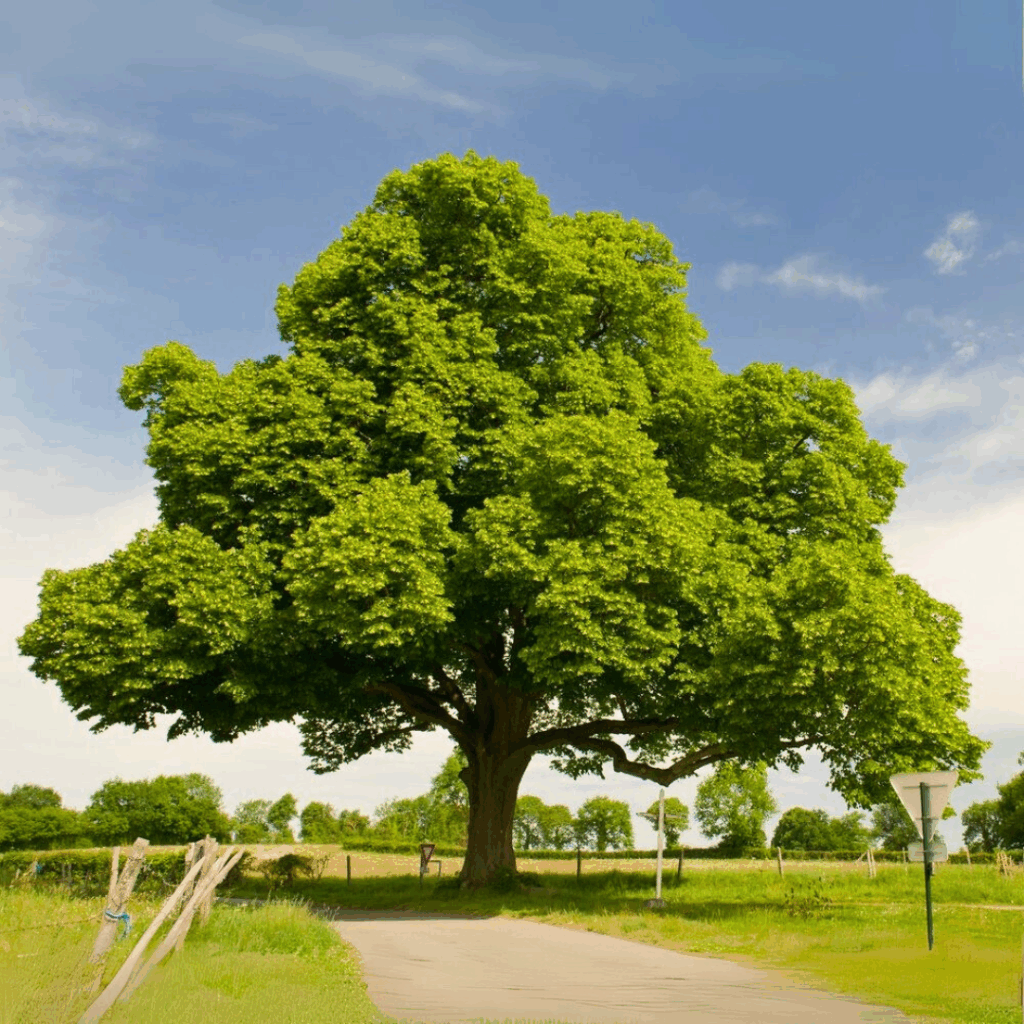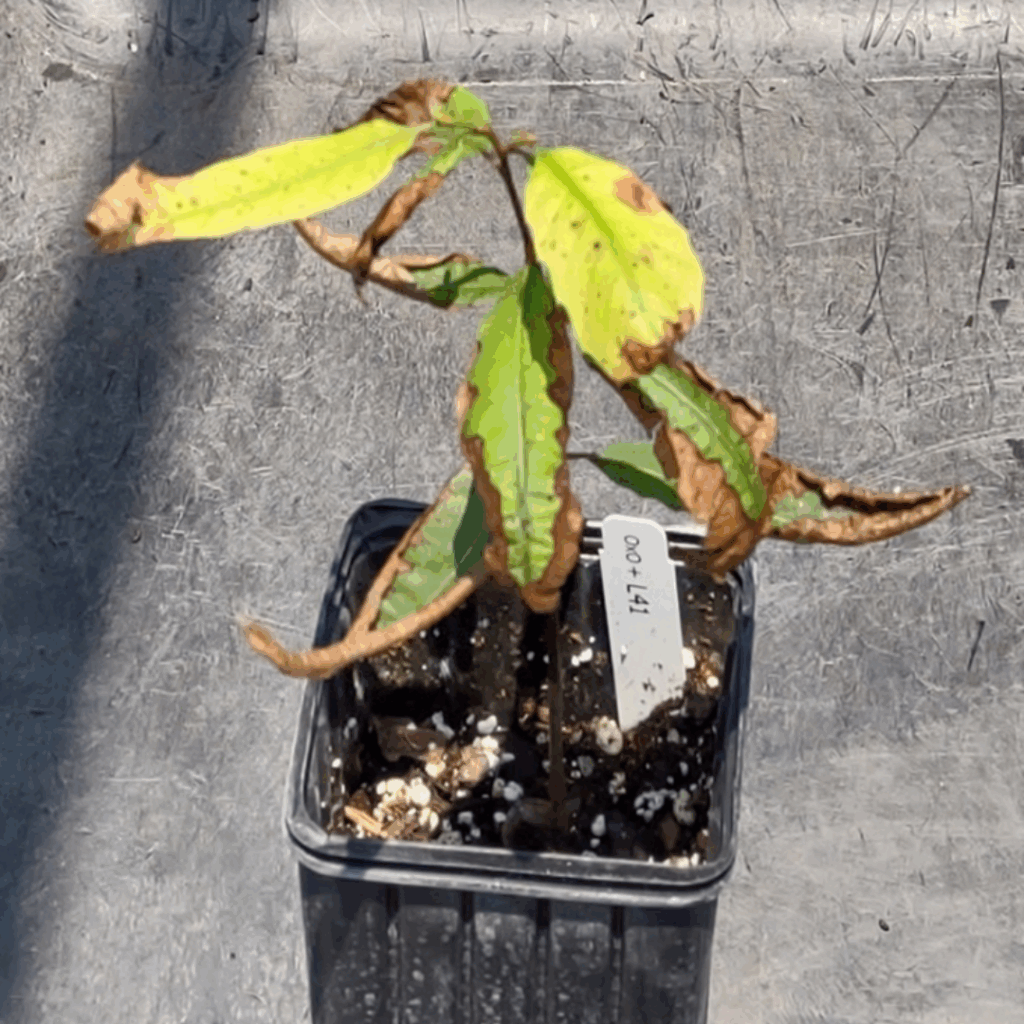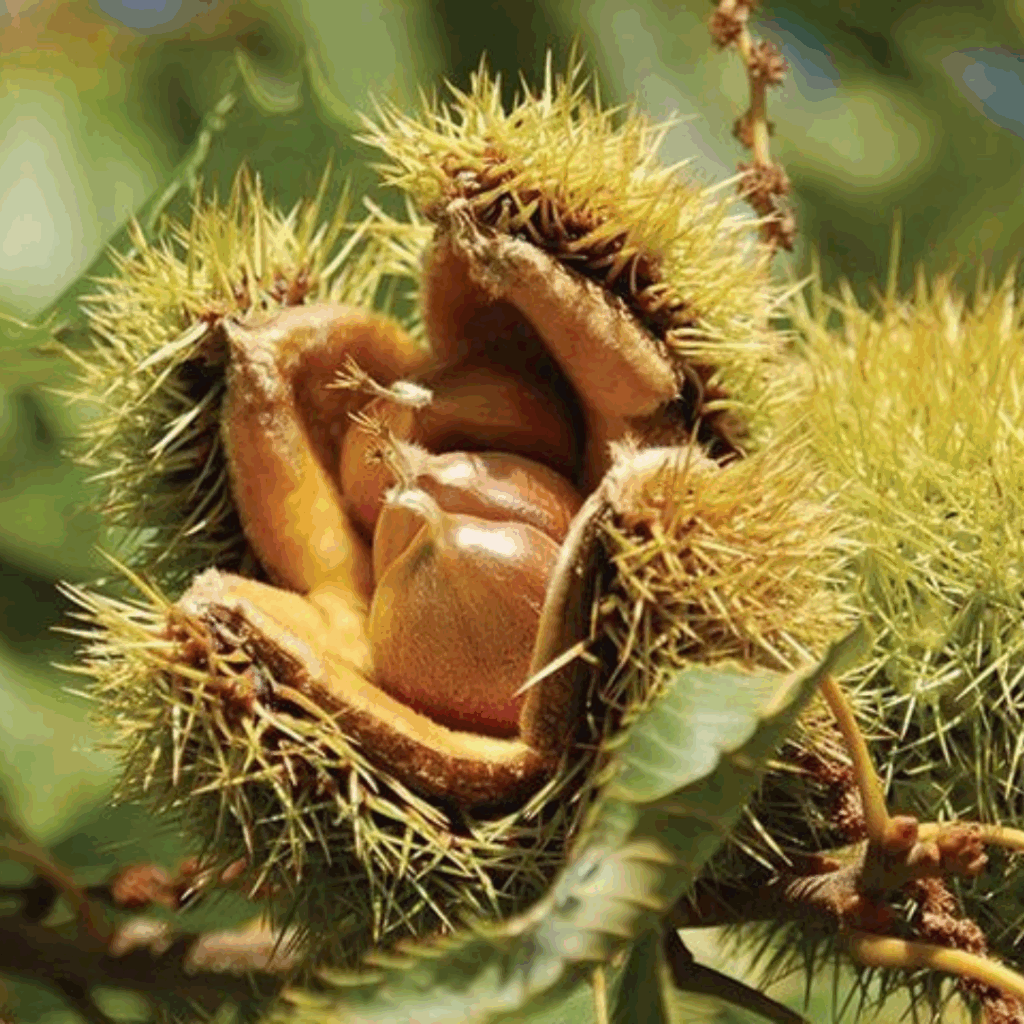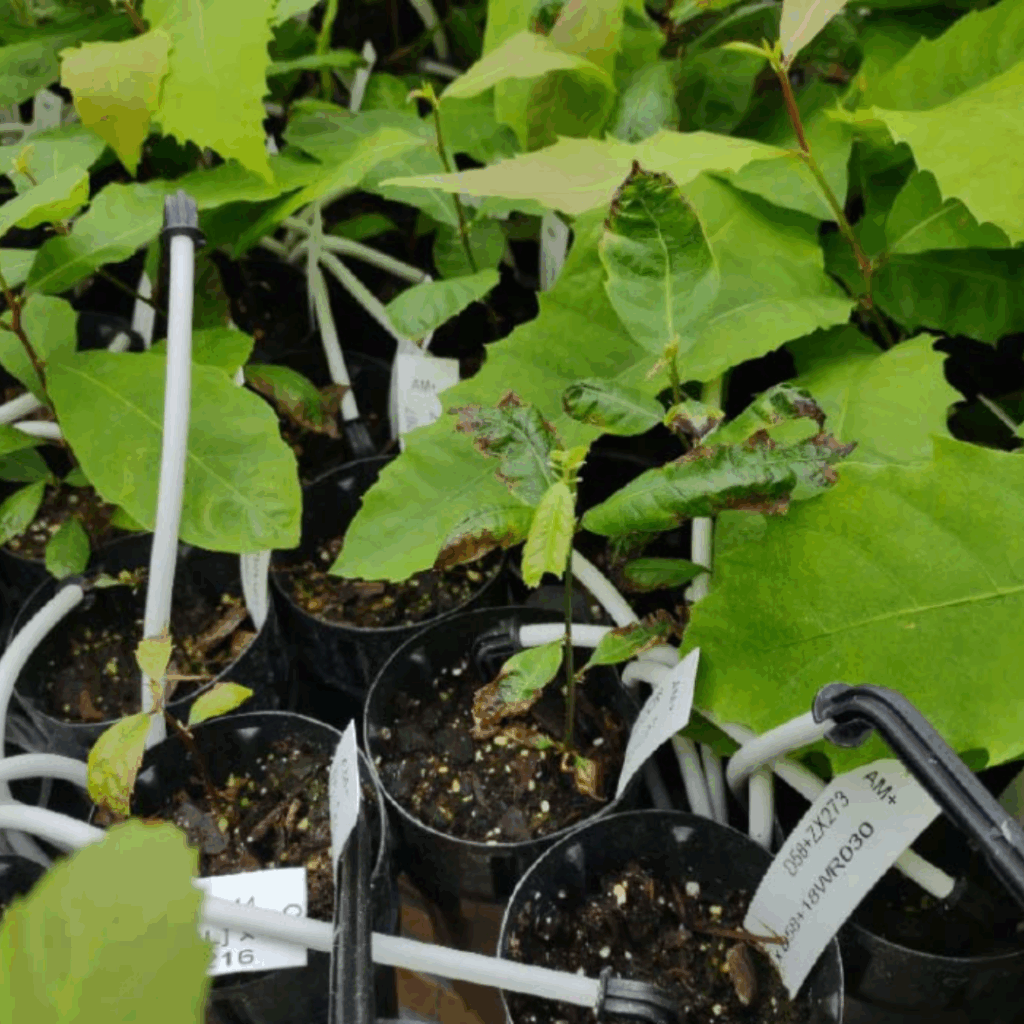- IUCN Red List of Threatened Species (2018). https://www.iucnredlist.org/species/62004455/62004469 [↩]
- Mlinarec J et al (2018). Molecular evolution and invasion pattern of Cryphonectria hypovirus 1 in Europe: Mutation rate, and selection pressure differ between genome domains. Virology https://www.sciencedirect.com/science/article/pii/S0042682217303902?via%3Dihub [↩]
- Petermann A (2025). The Darling 58 debacle. Earth Island Journal https://www.earthisland.org/journal/index.php/magazine/entry/lessons-from-the-unsuccessful-gm-chestnut-experiment [↩]
- Zhang B et al (2013). A threshold level of oxalate oxidase transgene expression reduces Cryphonectria parasitica-induced necrosis in a transgenic American chestnut (Castanea dentata) leaf bioassay. Transgenic Research. https://doi.org/10.1007/s11248-013-9708-5 [↩]
- TACF Press Release (2023). https://tacf.org/tacf-discontinues-development-of-darling-58/ ). See also: Chestnut chat: Darling 58 update. 15 Sept. https://www.youtube.com/watch?v=9w_ehgYyxGY [↩]
- Federal Register (2025) Availability of a Revised Petition for Blight-Tolerant Darling 54 American Chestnut (Castanea dentata) Developed Using Genetic Engineering. Docket No. APHIS-2020-0021 https://www.federalregister.gov/documents/2025/06/06/2025-10226/state-university-of-new-york-college-of-environmental-science-and-forestry-availability-of-a-revised [↩]
- USDA/APHIS (2025). Comment from the American Chestnut Foundation https://www.regulations.gov/comment/APHIS-2020-0030-19911 [↩]
- Canadian Chestnut Council comment to USDA/APHIS (2025). https://cban.ca/wp-content/uploads/Response-to-APHIS-to-D54-from-CCC-June-2025.pdf [↩] [↩]
- TACF Briefing (2025). Darling 58/54 – Darling 54 FAQ. https://tacf.org/darling-58 [↩] [↩] [↩]
- Data presented by Vasiliv Lakoba at TACF Webinar Chestnut Chat 44: 15 Dec 2023 – Darling 58 & Science Strategy Update, Part 1. https://tacf.org/chestnut-chat/# [↩] [↩]
- McKenna JR, reporting on experiments from Indiana (2023). TACF Webinar Chestnut Chat 44: 15 Dec 2023 – Darling 58 & Science Strategy Update, Part 1. https://tacf.org/chestnut-chat/#darling-58-update-sept-15-2023 [↩]
- Econexus. Discussion of the performance limitations of Darling 58/54 (2024). https://www.econexus.info/publication/genetically-engineered-american-chestnut [↩]
- Campaign to STOP GE Trees et al (2019). Biotechnology for Forest Health? The Test Case of the Genetically Engineered American Chestnut. https://stopgetrees.org/wp-content/uploads/2019/04/biotechnology-for-forest-health-test-case-american-chestnut-report-WEB-1.pdf [↩]
- Federal Register (2020) Petition for Determination of Nonregulated Status for Blight-Tolerant Darling 58 American Chestnut (Castanea dentata). Docket No. APHIS-2020-0030 https://www.federalregister.gov/documents/2020/08/19/2020-18135/state-university-of-new-york-college-of-environmental-science-and-forestry-petition-for [↩]
- SUNY ESF Progress Report 2024 (2024). https://www.esf.edu/chestnut/progress-report/index.php [↩]
- Canadian Chestnut Council (2022). https://cban.ca/wp-content/uploads/Canadian-Chestnut-Council-response-APHIS-D58.pdf [↩]
- Government of Canada website. https://inspection.canada.ca/en/plant-varieties/plants-novel-traits/general-public [↩]
- SilvaBio (2025). A breakthrough. https://www.silvabio.com/ [↩]
- Kamentz A (2024). GMOs could reboot chestnut trees. MIT Technology Review. https://www.technologyreview.com/2024/10/23/1105275/gmo-chestnut-trees-american-castanea-genetics-revival [↩]
- Fu J (2019). Researchers can restore the American chestnut through genetic engineering. But at what cost? The Counter https://thecounter.org/american-chestnut-restoration-genetic-engineering-indigenous-sovereignty-gmo [↩] [↩]
- American Chestnut Cooperators’ Foundation (2024). https://accf-online.org/News2024Feb.pdf [↩]



